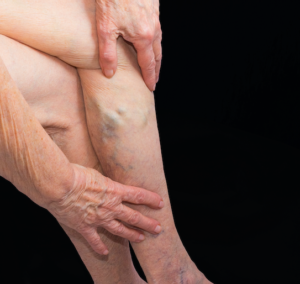 The first thing most people think as they notice their very first spider vein or varicose vein is “Oh no”. The once beautiful skin on their legs is now flawed (or perceived to be so).
The first thing most people think as they notice their very first spider vein or varicose vein is “Oh no”. The once beautiful skin on their legs is now flawed (or perceived to be so).
The next is likely scanning their immediate family history. Did my mom or dad have varicose veins? My grandparents? Aunts? Uncles?
While genetics does raise your risk factor so does lifestyle, there are things you can do to help stop them in their tracks. It’s positive that you were paying attention and noticed.
Varicose veins are considered to be unattractive and most who notice symptoms of venous insufficiency will do their best to adjust their wardrobe accordingly to hide them. To most people, the lack of pain translates to it not being a legitimate medical issue. That is simply not the truth.
Symptoms vary from patient to patient, varicose veins are a sign that your circulatory system is in distress. Step #1 is drink more water. You are chronically dehydrated. Step # 2 is to seek professional help from a Vein Specialist. Catching them as soon as they begin to appear will save you probable pain later in life as well as help to stop them from spreading and becoming more of an issue.
Signs you are developing varicose veins:
- You can see veins that were once hidden
- Veins are dark purplish blue
- Veins look twisted, swollen, and may bulge
- Your legs may ache
- Spider veins (telangiectasia) may also begin to appear
- Your ankles may become swollen
- Discoloration may present – skin becomes shiny – brownish or blue in color
- Your legs may feel heavy, especially at night or right after a workout
- If you happen to cut the affected area its harder than usual to stop the bleeding
- You may experience lipodermatosclerosis – The fat under the skin above the ankle becomes hard
- You may develop eczema on the affected area. It will become red, itchy, and dry
- Leg cramps upon standing may be experienced
- Restless Leg Syndrome (twitching of the legs while trying to sleep) may begin
- Irregular white patches that look like scars may appear near the ankle (Atrophie Blanche)
Complications become a risk with inhibited blood flow. These can include:
- Blood clots
- Bleeding
- Chronic venous insufficiency (it is often mistakenly believed that this is the same as varicose veins. In cases of chronic venous insufficiency, the skin does not exchange nutrients, oxygen, or waste products with blood properly due to weak blood flow. Chronic venous insufficiency and varicose veins are two different entities that are closely related.
- Those who present with chronic insufficiency are likely to develop varicose eczema as well as venous ulcerations.
It is important to get a medical evaluation for signs of chronic venous insufficiency and symptoms of varicose veins.
If you are in the Tampa Bay Florida area and would like to get a professional opinion as well as a proposed treatment plan to get you in the best possible vascular health call Dr. Zuzga of The West Florida Vein Center today at
(727) 712-3233. www.westfloridaveincenter.com.